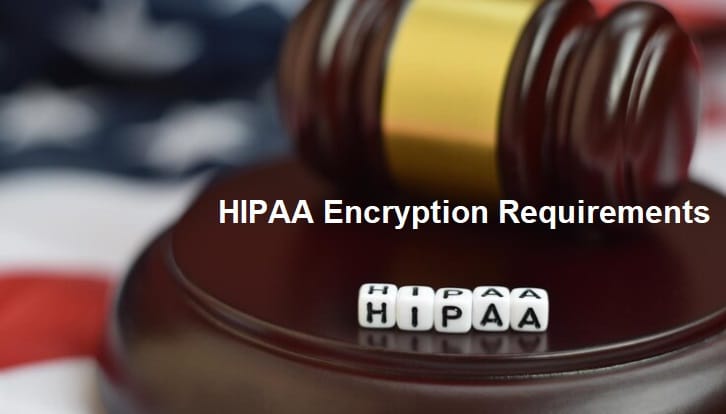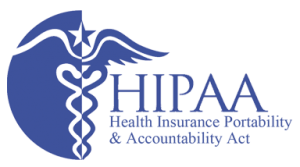Understanding HIPAA encryption requirements is important for developers and compliance officers. Technically speaking, the HIPAA encryption requirements can be considered as addressable implementation specifications rather than strict “requirements.”
If you don’t use encryption in your business to safeguard your electronic Protected Health Information (ePHI), it is imperative to adopt an alternative approach that guarantees the integrity, availability, and confidentiality of the data. This alternative method should provide protection equal to or higher than encryption.
This blog post will delve into the intricate world of HIPAA data encryption requirements, providing a comprehensive guide on achieving and upholding HIPAA compliance in today’s healthcare industry.
What Are HIPAA Encryption Requirements for Electronic Patient Health Information (ePHI)?
The Health Insurance Portability and Accountability Act (HIPAA) establishes comprehensive guidelines to protect patients and their information. HIPAA encompasses three foundational rules:
- The Privacy Rule
- The Breach Notification Rule
- The Security Rule
The Privacy and Breach Notification Rules mainly focus on defining protected health information and reporting breaches.
The Security Rule is crucial in safeguarding ePHI by enforcing confidentiality, security, and integrity requirements. While the Security Rule doesn’t prescribe specific encryption protocols, technologies, or standards, it emphasizes the need for appropriate security measures. Healthcare organizations must justify their choice of security methods or alternatives.
Encryption in the Security Rule
Encryption is a crucial element within the Security Rule, significantly protecting electronic Patient Health Information (ePHI).
The HIPAA Security Rule incorporates data encryption requirements within access controls and transmission security. While it may initially seem confusing when taken out of context, the purpose of encryption becomes clear when considering the Security Rule. The requirement is to ensure that ePHI remains unreadable, undecipherable, and unusable to unauthorized individuals or software programs.
To align with the Security Rule and protect ePHI, healthcare organizations should consider other related standards, including:
- Person or entity authentication
- Emergency mode operation plans
- Password management
Implementing Encryption for ePHI Protection
Additionally, the Security Rule requires Covered Entities and Business Associates to implement technical security measures to prevent unauthorized access to ePHI during transmission.
While a virtual private network (VPN) can be used, implementing encryption software is a logical solution. Encryption ensures that even if unauthorized individuals gain access to electronic communications containing ePHI, they cannot read, decipher, or utilize the information.
To comply with encryption requirements, organizations should refer to subpart 164.312 of Title 45, which mandates the implementation of mechanisms to encrypt or decrypt protected health information whenever applicable or appropriate.
HIPAA Guidelines and Recommendations
While HIPAA does not specify specific encryption protocols, technologies, or standards, healthcare organizations can use the National Institute of Standards and Technology (NIST) recommendations. NIST suggests utilizing the following encryption methods:
- Advanced Encryption Standard (AES)
- OpenPGP
- S/MIME
These encryption methods should be applied to ePHI at rest and during transmission. AES, with a minimum key size of 128 bits, provides robust protection for PHI data.
Healthcare organizations need to establish procedures for secure storage and management of encryption keys, as advised by NIST.
HIPAA Encryption Requirements for Data at Rest
‘At rest data’ refers to inactive information stored on digital mediums such as server hard drives, solid-state drives (SSDs), or mobile devices like tablets and phones.
Implementing strong encryption techniques for data at rest is essential to protect Protected Health Information (PHI) from unauthorized access or use.
HIPAA specifies that valid encryption protocols for data at rest should align with NIST Special Publication 800-111, “Guide to Storage Encryption Technologies for End User Devices.” This publication outlines the appropriate technologies for secure storage, including advanced cryptography, full disk encryption, virtual disk security, and mobile device encryption.
Full Disk Encryption (FDE)
Full disk encryption provides comprehensive protection for data stored on computers and digital devices by encrypting the entire storage device, including the operating system, applications, and user data.
FDE utilizes encryption algorithms like the Advanced Encryption Standard (AES) to create an encrypted layer between the hard drive and the operating system. Only a valid key can unlock this layer, rendering the data unreadable to unauthorized users even if the device is stolen or compromised.
FDE also safeguards against tampering and unauthorized alterations to the encrypted disk.
Virtual Disk Encryption (VDE)
Unlike FDE, virtual disk encryption encrypts only the virtual disk, allowing multiple operating systems and applications to be protected on a shared hardware platform. Each virtual machine’s disk is assigned a unique encryption key, scrambling the data into an unreadable format until decrypted with the correct key or password.
VDE ensures that even if an attacker gains access to the virtual machine, they cannot decrypt the data without the authorized credentials.
File/Folder Encryption
This method encrypts individual files or folders using data encryption algorithms like AES rather than the entire storage device. Sensitive information within encrypted files or folders remains protected, even if the device is stolen or compromised.
Only those with the correct password or key can access and decrypt the data, ensuring its confidentiality.
HIPAA Encryption Requirements for Data in Transit
‘Data in transit’ means actively moving information between a sender and a destination. It must be adequately protected to maintain confidentiality and integrity.
HIPAA sets strict requirements for securing Protected Health Information (PHI) during transmission over networks. To meet these requirements, organizations must adhere to the encryption protocols outlined in NIST Publication 800-52 and 800-77.
NIST Publication 800-52, titled “Guidelines for the Selection and Use of Transport Layer Security (TLS) Implementations,” provides detailed guidelines on using various encryption technologies to transmit data over networks securely.
It specifies the protocols that should be used when transmitting PHI in compliance with HIPAA. The publication also outlines key management rules and testing and monitoring procedures to protect PHI during transmission.
NIST Publication 800-77, known as the “Guide to IPsec VPNs,” offers instructions on safely using IPsec Virtual Private Network (VPN) technology.
It discusses the advantages, drawbacks, design, and implementation of IPsec VPNs and the selection of security protocols for data communication over open networks. The publication also provides best practices for key management and incident response strategies.
Encrypting Email Communications
For email communications containing private patient information, it is advisable to employ encryption solutions or alternative safeguards to protect against potential hacking attempts.
While the Office for Civil Rights (OCR) does not explicitly mandate email encryption, following NIST’s recommendations for encryption standards, such as Advanced Encryption Standard (AES) with 128, 192, or 256-bit encryption, OpenPGP, and S/MIME, is highly recommended.
Opting for Secure Messaging Platforms
To address the challenges posed by the use of personal mobile devices by healthcare workers, organizations often opt for secure messaging platforms instead of implementing “Bring Your Own Device” policies.
These platforms comply with HIPAA encryption standards by encrypting data during storage and transfer. This ensures that intercepted data is rendered unreadable without proper authorization.
What Are HIPAA Encryption Protocols, and Why Are They Important to Protect ePHI?
HIPAA encryption protocols are vital for safeguarding electronically Protected Health Information (ePHI) by preventing unauthorized access and disclosure. Encryption transforms data into unreadable characters, making it extremely challenging for attackers to view or steal PHI. It also ensures the secure transmission of PHI over networks, preventing eavesdropping and tampering.
Maintaining strong encryption practices for data at rest and in transit is essential for privacy and compliance with the Department of Health and Human Services. Strong encryption measures provide end-to-end security and contribute to reasonable and appropriate security measures.
Here are some HIPAA encryption protocols you should know as a business:
Advanced Encryption Standard (AES-256)
AES-256 is a symmetric encryption algorithm recognized by the U.S. National Institute of Standards and Technology. With its complex 256-bit decryption key, AES encryption is highly resistant to brute-force attacks, making it suitable for handling confidential data.
Transport Layer Security (TLS)
This protocol supports secure sensitive data transmission over the web, email, or instant messaging. TLS employs AES-256 and additional security measures to ensure data transfer security.
Pretty Good Privacy (PGP) and S/MIME
These protocols are also compliant encryption methods. But their complex public key management can be cumbersome for most organizations. In contrast, AES-256 and TLS 1.2 are preferred due to their ease of implementation and effectiveness.
HIPAA Encryption: FAQs
Is encryption alone enough to safeguard PHI?
Encryption alone is insufficient to protect Protected Health Information (PHI) fully. Businesses should also implement additional security measures alongside encrypted data, such as access controls and authentication, conducting regular security audits, providing employee training, establishing security policies, and developing incident response plans. A multi-layered approach helps address vulnerabilities and mitigate risks to ensure the comprehensive protection of PHI.
What services should be encrypted?
Any service that contains electronic PHI should be encrypted following HIPAA encryption requirements. Here are some examples:
- Data at-rest
- Data in-transit
- Mobile devices
- Remote access
If PHI is unencrypted, is it an automatic HIPAA violation?
The lack of encryption for Protected Health Information (PHI) does not automatically constitute a HIPAA violation.
However, If an organization decides that encryption is not reasonable or appropriate based on their risk assessment, they must document their justification for the decision and implement an equivalent alternative measure to ensure the security of PHI. This alternative measure should provide an equal or greater level of protection compared to encryption.
What do the HIPAA encryption requirements protect?
HIPAA-compliant encryption aims to protect electronic Protected Health Information (ePHI). Various factors can undermine patient data protection, leading to non-compliance issues and the exposure of sensitive information.
- Unsecured email systems and cloud storage: Unsecured email systems and servers pose a risk of data breach.
- Lost or stolen devices: An unencrypted laptop or mobile can expose confidential data and potential data breaches.
- Human errors: Proper staff training is crucial to ensure the secure handling of protected health information.
- Third-party partners: The involvement of third-party partners necessitates ensuring their compliance with encryption and data protection measures.
How do the HIPAA email encryption requirements apply to communications with patients?
Interpreting and applying HIPAA’s email encryption requirements can present challenges, particularly when dealing with patients who either don’t use an email service equipped with decryption capabilities or cannot use one.
In any case, it’s prudent for healthcare providers to inform patients about the inherent risks of unencrypted emails to ensure they’re aware of the potential privacy concerns.
However, HIPAA offers some leniency in this regard. It permits Covered Entities to send unencrypted emails containing electronic Protected Health Information (ePHI) if a patient has shown a preference for this mode of communication or if the patient initiated the conversation via email.
Does HIPAA require encryption?
According to HIPAA, encryption is an “addressable” security measure, not a required one. This means that a Covered Entity (CE) or Business Associate (BA) must implement an encryption solution if, after a risk assessment, it is deemed appropriate to protect ePHI.
Suppose the entity decides that encryption is not an addressable implementation specification. In that case, it must document this decision and implement an equivalent alternative measure, provided it is a reasonable and appropriate safeguard.
Which email service providers offer email encryption for HIPAA Covered Entities?
HIPAA-compliant email providers have usually signed a Business Associate Agreement (BAA), thus making them a viable choice for healthcare organizations that deal with electronic Protected Health Information (ePHI). Here are a few examples:
- Google Workspace
- ProtonMail
- Hushmail
- Paubox
- Identillect
Conclusion
Encryption is vital in protecting data at rest, in transit, or in email communications. It helps to safeguard sensitive patient information from unauthorized access and potential breaches, which in turn builds necessary trust.
MedStack is designed to help you navigate HIPAA compliance easily. We offer holistic solutions tailored to the specific needs of digital healthcare organizations, helping them meet the stringent HIPAA encryption requirements to alleviate the burden of compliance.
Discover how MedStack can help solidify your HIPAA compliance posture and make operating a digital health company easier.





